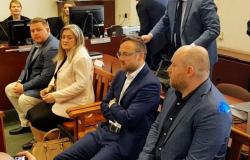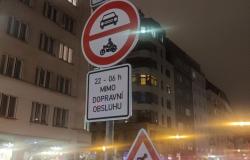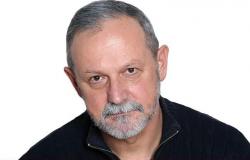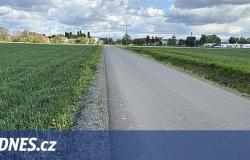Patient shortly before surgery. Photo source: with the consent of VFN in Prague
Parkinson’s disease is the second most common neurodegenerative disease. An estimated 30,000 to 50,000 patients live with this disease in the country. Classic symptoms are rest tremor, stiffness, standing disorder and slowness of movements.
“In the event that pharmacological treatment can no longer ensure optimal compensation of the movement state, we have been using deep brain stimulation in selected patients for twenty-six years. We operated on our first patient in March 1998. Since then, we have been looking for new places that more effectively solve the specific problems of the patient. Like in this case, when we implanted the stimulation electrode in a new target in the brain, for the first time in the Czech Republic,” comments the head of the Neurological Clinic of the 1st Faculty of Medicine of the University of Warsaw and VFN, Robert Jech.
Read also:
Neurologists from VFN: We live in an era of sleep crisis, which brings an increased risk of diseases
Deep brain stimulation is a surgical procedure in which a stimulation electrode is introduced from a minimal approach and with millimeter precision into a selected core deep in the brain. The electrode is then connected by a connecting cable to a generator of electric pulses (neurostimulator), which, like a pacemaker, is placed in the subcutaneous tissue of the subclavian region.
Stimulation is switched on for the first time approximately one month after surgery. The operation is really demanding for the patients, it takes several hours while they are fully conscious. It is necessary to investigate and assess the effect of stimulation in the relevant nucleus deep in the brain. The patient must lie down and his head is clamped in a stereotaxic frame.
Why a new unique place in the brain?
The 62-year-old patient had the biggest problems with action tremor of the right upper limb, which, unlike resting tremor, is not typical for Parkinson’s disease, although it can rarely accompany classical symptoms.
“We probably wouldn’t be able to influence such a tremor effectively enough from the subthalamic nucleus, into which we normally implant electrodes,” says Filip Růžička, head of the DBS section from the Neurological Clinic of the 1st Faculty of Medicine of the University of Warsaw and VFN.
Read also:
Irena (43) hit rock bottom, her jaw joints fell apart due to rheumatism
“Furthermore, action tremor was not well controlled by medication, so we had to find a target in the brain from which to influence both the classic symptoms of the disease and the action tremor of the right hand,” he adds.
According to foreign experience, one of the promising options was the PSA (posterior subthalamic area) – an area of white and gray matter deep in the brain near the brainstem.
“The PSA is a unique site connecting a large number of brain structures that play a role in various clinical symptoms of movement disorders. From our point of view, it was important that previous research showed that DBS of this area could significantly affect action tremors in addition to the classic symptoms of Parkinson’s disease,” explains neurosurgeon Jaromír May, from the Department of Stereotactic and Radiation Neurosurgery at Na Homolce Hospital, who implanted the electrode in the patient’s brain and stimulator to the front of the chest.
The patient perceives the procedure as a small miracle
“I felt like a new person, I could use my right hand again after years,” the patient assesses her condition after the operation. Before the electrode was inserted, she could not sign, drink from a glass, use a computer mouse, shake hands with friends or drive a car. It was quite difficult for a right-handed person to relearn to use her left hand so that she was able to handle at least basic everyday activities.
“The first two days after the operation, I felt that I had a foreign object in my body, but it did not restrict me in any way and I learned to live with it very quickly. I feel extremely lucky and grateful,” concludes the patient, who currently feels almost no difficulties.
The patient will continue to be monitored by the center for interventional therapy of VFN motor disorders, she will go for regular check-ups. The first one turned out great. “The stimulation effect was great, the patient was practically symptom-free. As part of the early postoperative management, the patient will have to make further adjustments to both the stimulation settings and the pharmacotherapy, but already the result is really excellent. We hope that he will now live as if he did not have Parkinson’s disease at all and that the effect will be permanent,” adds Růžička.
Tags: hope Parkinsons patients doctors Prague turned hand tremors brain
-






